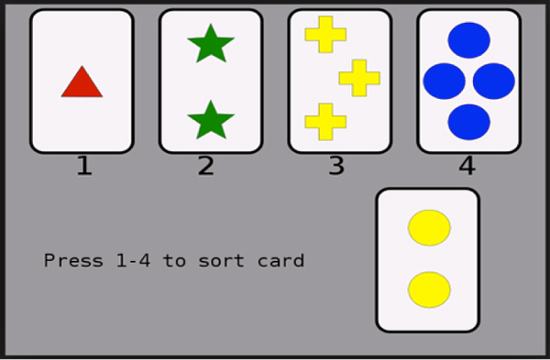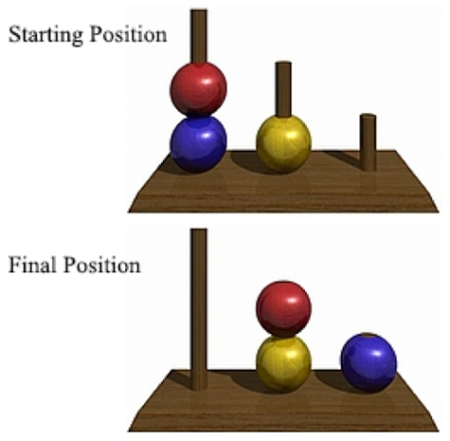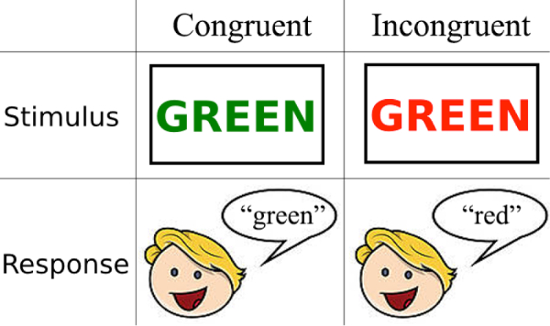Executive Function in Autism Spectrum Disorder
Overview
资料来源: 乔纳斯 · 卡普兰和莎拉一、 贝尔实验室 — — 南加利福尼亚大学
注意、 工作记忆、 规划、 控制冲动、 抑制作用和心理灵活性是人类认知往往被称为行政职能的重要组成部分。自闭症谱系障碍是一种发展的障碍,其特点是在社会互动、 沟通和重复性行为障碍。它是一种疾病,会持续一生,并且被认为影响人口的 0.6%。自闭症的症状建议执行的功能,可以通过专门的心理测试评估中的赤字。采用每个强调执行功能的不同方面的几个测试,我们可以获得更全面地了解这种疾病的认知特征。
此类任务,知道作为威斯康星卡片分类测试 (WCST),是在研究和临床研究中广泛使用,作为一种高度敏感的执行功能中的赤字措施复杂的认知任务。它测试一个人的能力,将注意力转移,并测试其灵活性与改变的规则和加固。1在威斯康星卡片分类测验,参与者提出了四个刺激卡,纳入三个刺激参数: 颜色、 形状和数量。参与者被要求排序响应卡根据不同的原理,改变其分类的标准,基于实验者的反馈。与会者试用不同的规则,直到他们找到整理卡片的正确方法。执行功能障碍患者往往陷入卡片分类任务,无法更改其排序策略。这种持久性与不正确的战略被称为执拗。
第二个任务,伦敦塔 (ToL) 是一个测试依赖于复杂的规划、 重新评估和更新的计划好的行动。自闭症有报道就受损对涉及规划任务。2在 ToL 任务,个人必须移动磁盘从一个预先安排好的序列上三钉以匹配在尽可能少动作为可能,以下具体规则的目标状态。
第三个任务,称为 Stroop 测试,目标认知抑制能力。在此任务中与会者显示颜色的名称,写在不同的颜色,并被要求辨认的颜色的字写在。例如,在不一致的情况下,将绿色写词蓝色。个人有抑制困难不应执行以及通常发育的个体对这项任务,涉及文字的抑制作用。
在这个视频中,我们表明如何管理 WCST、 ToL 和 Stroop 任务灵活性、 规划、 和抑制通常发展同行,与自闭症谱系障碍的儿童进行比较,并探讨每个组对这些不同的方面的执行功能的执行。
Procedure
1.参与者招聘
- 自闭症人口招聘
- 招聘 40 名与会者,年龄 6-18 岁,与自闭症谱系障碍。可以使用自闭症诊断访谈订正3和自闭症诊断观察计划验证自闭症的诊断。4
- 控制人口招聘
- 招聘 6-18 岁的学员中,有 40 与自闭症的参与者人口在年龄和智力相匹配。
- 请确保与会者被充分告知的研究程序,并签署了所有适当的同意书。
2.数据收集

图 1。提出了一种在计算机屏幕上的四个刺激卡。这些卡片作为类别用于匹配每个 64 卡从甲板。卡片可以基于三个规则匹配: 编号,颜色,和/或形状。
Results
Application and Summary
References
- Grant, D. A. and Berg, E. A. (1948). A behavioural analysis of degree of reinforcement and ease of shifting to new responses in a Weigl-type card sorting problem. Journal of Experimental Psychology, 38, 404-411.
- Ozonoff, S. et al. (1991) Executive function deficits in high-functioning autistic individuals: relationship to theory of mind. J. Child Psychol. Psychiatry 32, 1081-1105
- Lord, C., Rutter, M., & Le Couteur, A. (1994). Autism Diagnostic Interview-Revised: A revised version of a diagnostic interview for caregivers of individuals with possible pervasive developmental disorders. Journal of Autism and Developmental Dis- orders, 24, 659-685.
- Lord, C., Rutter, M. L., Goode, S., Heemsbergen, J., Jordan, H., Mawhood, L., & Schopler, E. (1989). Autism Diagnostic Observation Schedule: A standardized observation of communicative and social behavior. Journal of Autism and Developmental Disorders, 19, 185-212.
- Heaton, R. K. (1981). Wisconsin Card Sorting Test Manual. Odessa, FL: Psychological Assessment Resources, Inc.
- Hill, E. L. (2004). Executive Dysfunction in Autism. Trends in Cognitive Sciences, 8(1), 26-32.
跳至...
此集合中的视频:

Now Playing
Executive Function in Autism Spectrum Disorder
Neuropsychology
17.8K Views

裂脑
Neuropsychology
68.3K Views

电机的地图
Neuropsychology
27.5K Views

神经心理学的观点
Neuropsychology
12.0K Views

决策和爱荷华州赌博任务
Neuropsychology
32.6K Views

顺行性遗忘症
Neuropsychology
30.3K Views

生理相关的情感识别
Neuropsychology
16.3K Views

事件相关电位和古怪任务
Neuropsychology
27.5K Views

语言: 在语义错位 N400
Neuropsychology
19.6K Views

学习和记忆: 记得知道任务
Neuropsychology
17.2K Views

测量与基于体素的形态计量学的灰质分歧: 音乐的大脑
Neuropsychology
17.3K Views

解码听觉表象与磁模式分析
Neuropsychology
6.4K Views

功能磁共振成像视觉注意: 基于调查的对象的注意力控制
Neuropsychology
41.9K Views

弥散张量成像在创伤性脑损伤
Neuropsychology
16.8K Views

利用经颅磁刺激在行动观察测量运动兴奋性
Neuropsychology
10.2K Views
版权所属 © 2025 MyJoVE 公司版权所有,本公司不涉及任何医疗业务和医疗服务。

